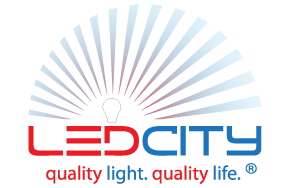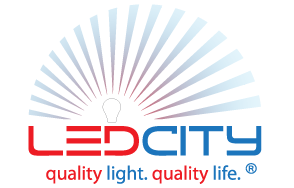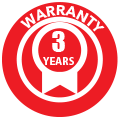FAQs
General
What is your quality guarantee?
All products sold through LEDcity.Asia website are covered by our 3-year warranty and a 14-day risk-free money-back guarantee.
Is your company an ISO 9001-certified company?
Yes, we are proud to be an ISO 9001:2008 certified company and we have developed a strict quality assurance system for our products and customer satisfaction.
Where do you ship your products from?
We ship our products from Singapore. Orders are normally shipped within 48 business hours if the products are in stock, please call us to check for product availability before purchase, thank you!
Do you provide customer support?
Yes, we provide fast and intensive customer support through the following ways:
- Online Feedback Form (Typical response time: within minutes and 24 hours)
- Emails (24/7 with fast response)
- Live Chat (9:00 a.m. to 6:00 p.m., Monday to Friday)
- Phone (9:00 a.m. to 6:00p.m., Monday to Friday)
What is your product warranty?
We provide 3-year product warranty. Within 3 years from the time of purchase ("Warranty Period"), if a rare malfunction should occur, We will, without charge, repair or provide a replacement for any product that proves to be defective in materials or workmanship. Replacement will typically be processed within 3 business days upon receipt of your return.
What is your return policy?
You may return products sold by us within 14 days of purchase for a full refund (minus shipping charges) by the same method in which payment was received. Please contact us for the procedures for your return and refund. You can expect a refund in the same form of payment originally used for the purchase 3 to 10 business days after we have received your return.
What is your privacy policy?
LED CITY respects and cares for your rights of privacy. We use the information you provide about yourself only to complete your orders or answer your questions; in some rare cases, we might use your email address for important updates. We do not share this information with outside parties except to the extent necessary to complete that order. To prevent unauthorized access, maintain data accuracy, and ensure the correct use of information, we have put in place appropriate physical, electronic, and managerial procedures to safeguard and secure the information we collect online and offline.
The entire LED CITY website is secured by the latest TLS (Transport Layer Security) encryption. TLS is the latest standard security technology for establishing an encrypted link between a web server and a browser. This link ensures that all data passed between our web server and your browsers remain secure, private, and integral.
In addition, LED CITY website is proud to be certified Level 1 PCI DSS compliant.
What is PCI DSS Compliance?
The Payment Card Industry Data Security Standard (PCI DSS) is an information security standard for organizations that handle credit card and debit card information. Defined by the Payment Card Industry Security Standards Council, the standard was created to increase controls around credit card data to reduce credit card fraud via its exposure. If any vendor wants to sell online and accept payments from Visa, MasterCard, American Express or Discover credit cards, the software and hosting needs to be PCI compliant.
For more information, please visit our Privacy Policy.
Glossary - LED and Basic Lighting Terms
Lumens
The measurement of the total amount of light emitted from the light fitting - the higher the lumens, the brighter the light.
Lux
The amount of lumens in a specific area, in other words, light intensity. Lux and lumens are different because we use lumens to compare the total amount of output from a light fitting, while use lux to measure the light intensity, where one lux is equal to one lumen per square meter.
1 lux = 1 lumen/m²
Watts
The amount of power a light fitting consumes (power consumption). When dealing with traditional lights, this is also used to determine the brightness, but this isn’t the case when dealing with LED lights where Lumen is used. Different LED lights with the same wattage will produce different Lumen levels, so always go by Lumen rather than the wattage when planning your installation.
Lumens Per Watt (LPW)
The more power a light fitting consumes, the more lumens it should produce. However, that’s not always the case. Lumens Per Watt (lumens divided by watts) is introduced to determine a light’s efficiency - the higher the number, the more efficient the light.
Correlated Colour Temperature (CCT)
The measure of light’s colour in Kelvin (K) degrees. There are many different definitions of colour temperature used in lighting industry, some are even contradicting. And here at LEDCITY, we define outputs of 2600K to 3700K as “warm white” (more yellow / orange), 3700K to 5000K as “neutral white”, and “5000K to 8300K as “cool white” or “day light” (more blue). Studies have shown that light colour affects our daily sleep cycles and mood. Cooler colours promote wakefulness and productivity, while warmer colours tend to promote relaxation.
Colour Rendering Index (CRI)
The Colour Rendering Index (CRI or also denoted as Ra) is a measure of light’s ability to properly render colour (ranges from 0 to 100 - the highest possible score). Colour rendering is important especially for commercial applications in order to reveal true and vivid colours of the products, artworks or architectural elements that are of interest.
The following table shows the quality of Colour Rendering Index:
Ra = 90 - 100 Excellent
Ra = 80 - 90 Good
Ra = 60 - 80 Moderate
Ra < 60 Poor
Beam Angle
The angle of which a light is emitted. Smaller beam angles will have an intense hot spot, where as larger beam angels will have a lesser intensity. Spot lights have smaller beam angels so light is more focused compared with other light fittings.
Power Factor
Power factor is the ratio of output against input of an AC circuit - the measure of electrical power efficiency. In lighting industry, power factor also means how much power is wasted by a light fitting and/or its driver. A power factor of 1 means no power is wasted while a power factor of 0.5 means half of the power is wasted in heat rather than converted to light.
Flickering
LED light fittings are connected to AC power (through internal or external LED driver) and flickering could occur as a result of voltage ripple from the AC power.
Glare
Glare is over excessive brightness that can be uncomfortable to look at, and it typically results from any small light source that emits a high lumen output. Glare can be easily avoided though: Using light fittings with fewer higher output LEDs or having a larger number of evenly spread LEDs are the two effective ways to reduce glare. Other ways to reduce glare are to use diffusers or reflectors.










